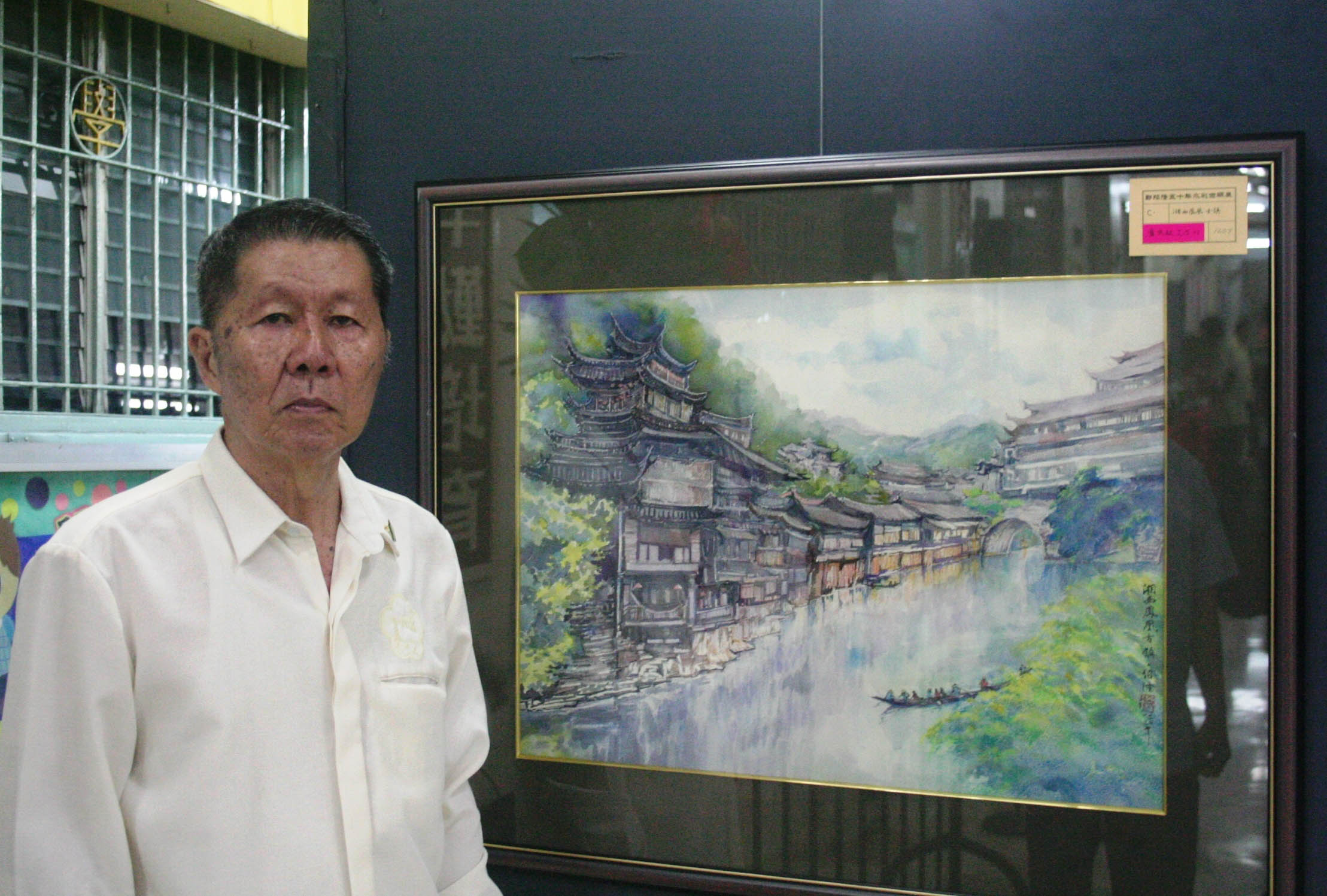First published in Tulay, Fortnightly Chinese-Filipino Digest 25, no. 7 (September 11-24, 2012): 16, 15.
It was 1986 and the People Power Revolution had just ended the 20-year rule of Ferdinand E. Marcos. People were euphoric, looking forward to a new re-established democratic order. One of the first moves the new President Corazon Cojuangco Aquino did was to free political prisoners and exhort the anti-Marcos activists abroad to come home and help rebuild the country.
My husband and I heeded her call. We had left the country in 1969, exiled activists living in China and working at the Philippine Section of Radio Peking, beaming broadcasts in Filipino since 1971. With our two China-born daughters, we prepared to come home.
While packing for our return to Manila, visiting painter Wong Shui Loong, Baguio-born in 1938 and of Chinese descent, came to our Zhuanjialou residence, with his wife, Dolly, and our colleague, Shi Xueleng, a huaqiao, Chinese-born in the Philippines who returned to help in China’s socialist construction.
Wong invited us to the opening of his one-man exhibit at the prestigious China Art Gallery. We accepted and saw his work: watercolor paintings of beautiful Philippine sceneries as well as Chinese scenic spots. I was impressed. At that time, our 14-year-old eldest daughter, Maningning was being mentored by Master Liu Fulin on Si Junzi Hua, the gentleman’s four paintings in xieyi style since she was 10, so Wong’s exhibit resonated with our family.
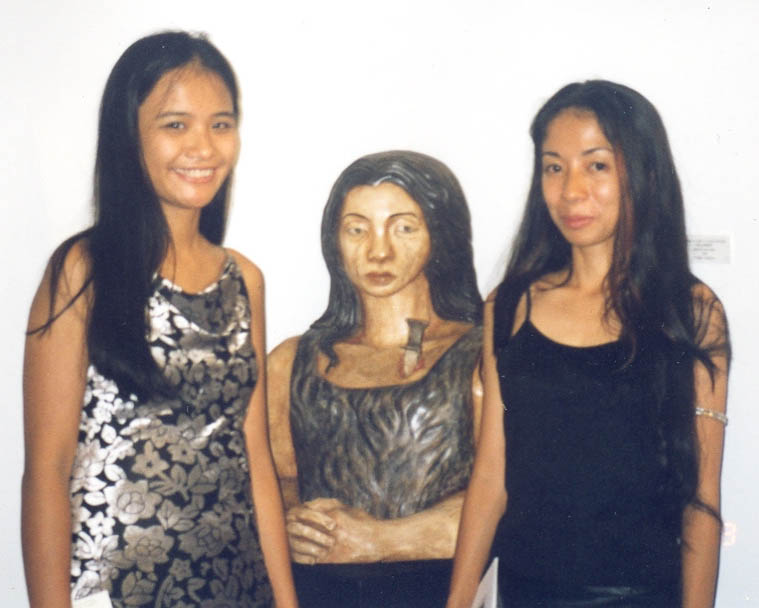
filmmaker Kiri Lluch Dalena (right).
Maningning (1972-2000) grew up to become poet and painter, known for her Chinese bamboo Zen paintings and poetry in three languages: Filipino, Mandarin and English.
The Maningning Foundation was founded in 2001 in her memory to celebrate the talents of young artists.
I met Wong again 26 years later at the Philippine Cultural College in Tondo, Manila, during the June 16 opening of the retrospective exhibit of his 50 years of painting watercolors.
It was a poignant reunion.
This time, there were paintings of the Manila-based septuagenarian artist’s favorite landscapes and seascapes in the Philippines and China: from Banaue to Boracay, from Suzhou to Hainan, there were 89 paintings in all, one for each of the 89 years of the former Philippine Cultural High School’s existence.
The PCHS is the artist’s alma mater. It was also the venue of Wong’s first solo exhibit in 1962.
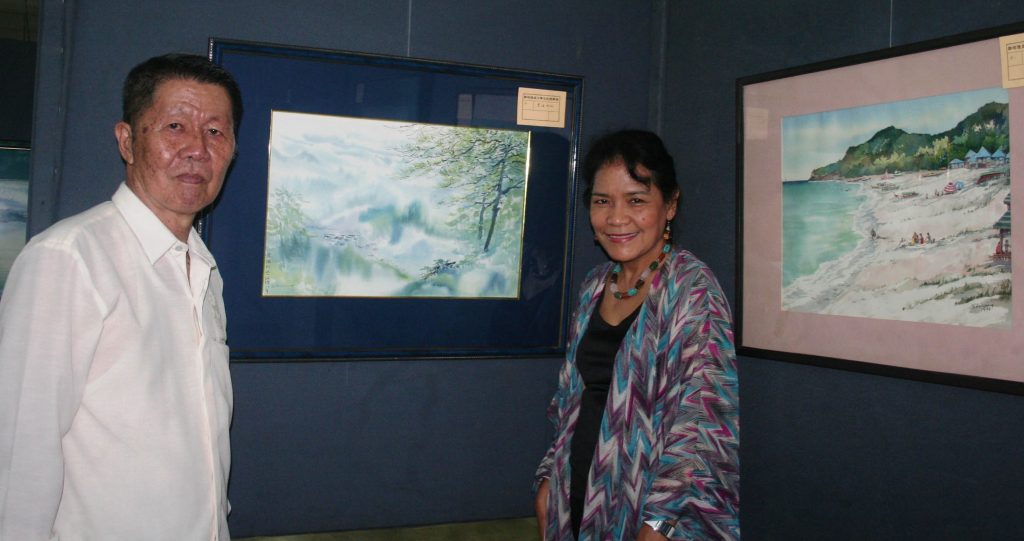
Wong is a mathematician. He received his master’s degree in mathematics from the University of the Philippines in Diliman, Quezon City. He graduated magna cum laude in chemical engineering from Polytechnic Colleges of the Philippines (Central Colleges of the Philippines) in Sta. Mesa, Manila.
He taught math at Mapua Institute of Technology in Manila from 1967 until he retired in 1996, when he was conferred Mentor of the Year by the math department, the first time Mapua gave this award for math and physics.
Wong started to dabble in watercolor during his primary art classes in Chinatown. He continued in high school under watercolorist Yu Kengtong, a product of U.P. School of Fine Arts.
In his free time, Wong painted, entered and won competitions such as the Shell Art Contest and Art Association of the Philippines.
For three years, he was one of the top five watercolorists, and was elevated to the Hall of Fame after his third win in Gallery Genesis’ annual Kulay sa Tubig watercolor competition in 1996.
The three paintings that got him the awards were, Wong reminisces, of Chinese seascapes (two Fujian sceneries and one Hainan seaside scenery), and signed with his traditional Chinese name chop. The recognition had taken on more meaning because the seven judges were all Filipinos.
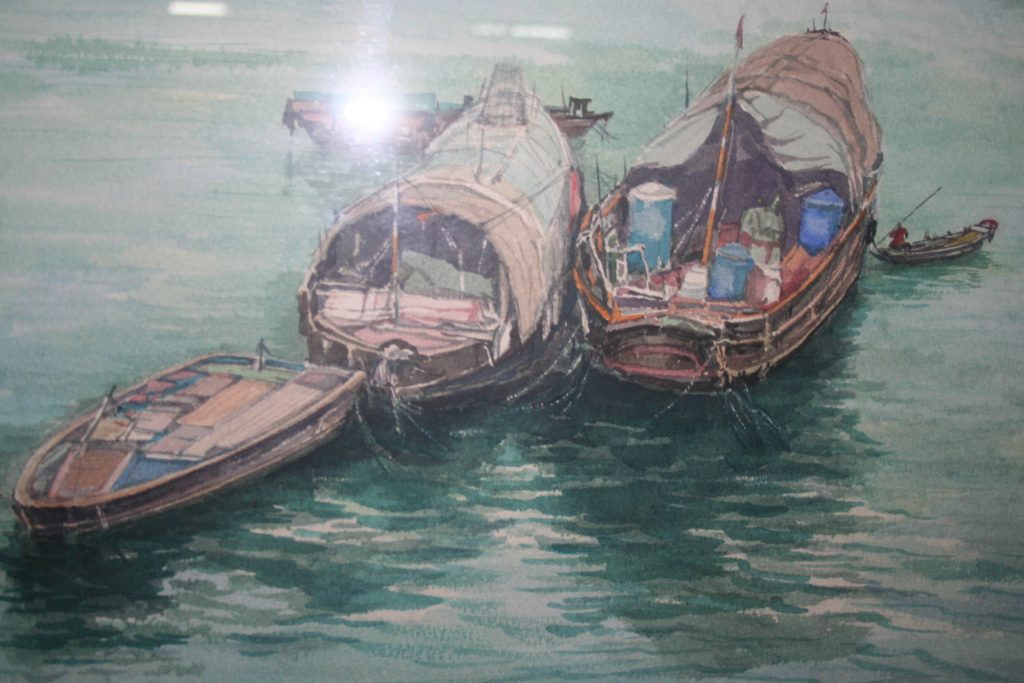
Wong is an active member of the Kho Shou Art Club, Watercolor Society of the Philippines, Watercolorists Association of the Philippines, Manila Watercolor Society (Agos Kulay Maynila) and the Art Association of the Philippines. He has exhibited in Hong Kong, Korea, Taiwan, Honolulu and China in around 20 solo shows.
Wong’s watercolors show what he loves most about his country of birth and his ancestors’ hometown: the seaside, blue seas, white sand and coconut trees of the Philippines; and mountain crags and ancient canals of China.
His paintings of Wuyi, Huangshan, Danxia, Lu and Zhangjiajie Mountains at different times of day are breathtaking. His work on Yongding, Xiayang Village, Lungyan and Fuzhou, all in Fujian province, transports one to the magical world of the dragon.
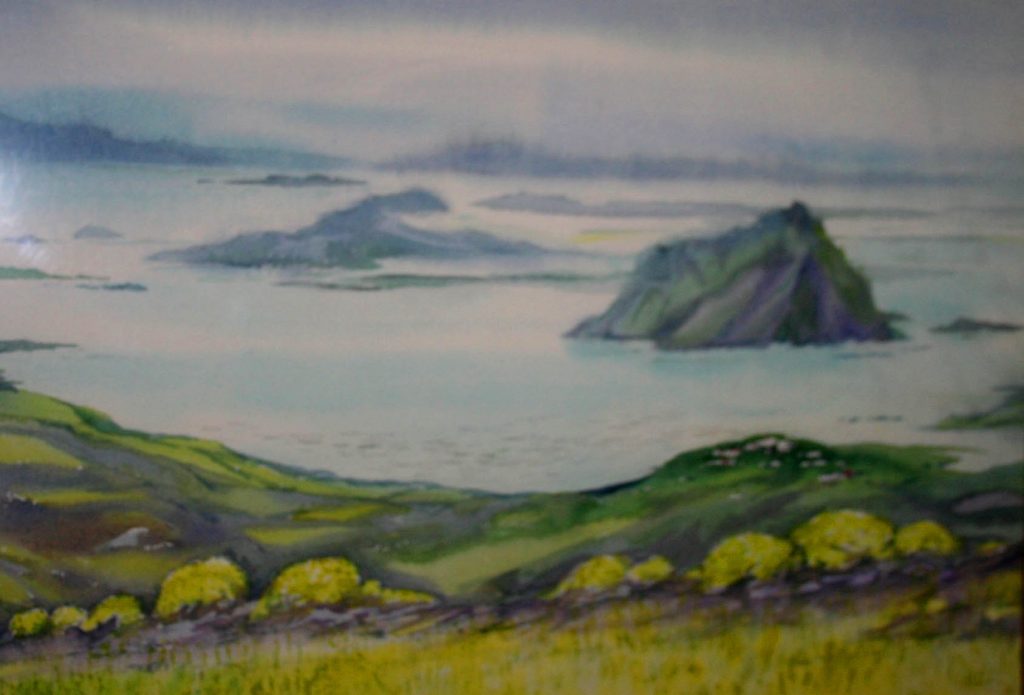
Meanwhile, “Mines View Park in Baguio,” “Jones Bridge in Manila,” “Boracay” and “Taal” breathe of love for his adopted home.
His strokes are influenced by traditional Chinese brushwork, although he uses watercolor painting technique that probably dates back to the cave paintings of paleolithic Europe. The same has been used for manuscript illumination since at least the Egyptian times, and during Europe’s Middle Ages.
At a time when emotions run high over the maritime territorial disputes between China and the Philippines, it is noteworthy to take stock of the initial efforts and continuing perseverance of artists like Wong to promote artistic fusion and cultural exchanges of the two countries and friendship between the two peoples.
This article was revised and submitted by the author to Tulay. It is based on an article published in the Philippine Daily Inquirer July 8, 2012. – Ed.
